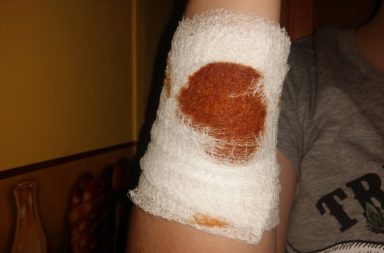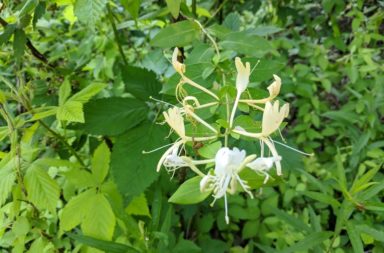Weeds are good. Maybe you don’t want too many of them in your garden (although some varieties are highly beneficial) but you do want plenty of them growing around your property to harvest for both food and medicine.
Learning how to identify weeds, wildflowers, berries, and trees should be a high priority on your prepping “to do” list. Stinging nettles are never any fun to stumble across with anything but a gloved hand when tending to your growing plots, but there are plenty of reasons to glove up and smile when you find a patch of these tasty and healing weeds.
Identifying Stinging Nettles
Stinging nettles generally grow only in nitrogen rich soil. They can reach heights of two to four feet tall. The healing weeds blooms between June and September.
Leaves on the plant are generally shaped somewhat like a heart The leaves have tapered ends and surrounded by fine and prickly teeth.
Stems are both rigid and stand upright.
The entire healing weed is covered in stiff tiny hairs that release stinging chemicals when they are touched. The little hairs are typically more present on the underside of both the stem and leaves. Once the weeds have been cleaned and blanch, they no longer sting
Stinging Nettles Benefits
Both stinging nettles and horse nettles can be boiled and cooked much like any other green crop you plant in the garden. Teas and broth made from stinging nettles have been used as natural medicine for centuries, particularly when either a sedative or diuretic becomes necessary.
Top 20 Medicinal Uses For Stinging Nettles
- Acid Reflux
- Colitis
- Celiac Disease
- Diuretic
- Sedative
- Fibromyalgia
- Intestinal Gas
- Urinary Tract Infection
- Arthritis
- Hay Fever
- Autoimmune Disorders
- Tendonitis
- Gout
- Alzheimer’s Disease
- Kidney Infections
- Insect Bites and Stings
- Skin Rashes
- Muscle Sprains and Strains
- Pain Relief
- Anti-inflammatory
Both the stems and the leaves from stinging nettles have been used to offer pain relief to swollen, injured, and sore muscles and joints when applied topically. To garner the anti-inflammatory benefits of the nettles orally, an extract from the weed is typically used.
When stinging nettles have been ingested to treat hay fever, the healing weed may reduce rapidly reduce the itching and sneezing associated with the condition by more than half. The nettles may help decrease the amount of histamine produced in the body, which leads to symptom relief by sufferers. Consuming stinging nettles or ingesting a freeze-dried version of the weed before hay fever season typically begins might prevent or reduce attacks
Although there is extremely little research into how stinging nettles impact either blood pressure or blood sugar levels, some users and animal testing may indicates the healing weed could be highly beneficial for keeping levels in check for human beings.
Stinging Nettles Nutritional Benefits
These healing weeds boast a substantial calcium and fiber content, making them a valuable foraging item in any survival scenario.
Stinging nettles are also packed with iron, potassium, silica, magnesium, iodine, essential fatty acids, as well as B complex vitamins and vitamin C.
Where To Find Stinging Nettles
Stinging nettles grow throughout the United States and in similar climates around the world. The medicinal weeds can typically be found along the edge of a wooded area or in the underbrush along a road.
Harvesting Stinging Nettles
This is not a complicated process, but as it goes with most things in life – timing is everything. And the gloves, but heaven’s sake, do not forget to wear gloves no matter how tough you think you are. If you have never happened across stinging nettles before, you will get an immediate and irritating lesson that you won’t ever forget.
It is recommended (highly, I can’t drive that point home enough) to use leather work gloves or rubber gloves – not thin jersey gardening gloves – and etal tongs, to harvest stinging nettles.
We have already harvested and preserved the stinging nettles scattered around our survival homesteading retreat this year. I wanted to embed a video demonstrating how to wash the nettles, even though it is a simple process that is explained in the following section.
So, I searched YouTube for “washing stinging nettles.” I didn’t come across what I was looking for, but what I did find was incredible – from a shocking stupidity standpoint, that is. People, well 20-something me, to be exact, were washing themselves – taking a bath in stinging nettles. If you have never touched a stinging nettles before and are considering ignoring my sound advice about wearing gloves, perform the same search on the video channel and watch a few moments of those idiots washing and rolling in the prickly weed. If children are nearby, mute the video before it plays because copious amounts of F-bombs are frequently dropped by the goofballs making the videos in a pathetic attempt to garner their 15 minutes of internet notoriety.
How To Remove Stingers
Once you have a bucket or sack full of stinging nettles, it is time to get to work removing all those dang stingers.
- Still wearing your gloves, remove the nettles fro their container and place them in the sink.
- Rinse the nettles in cold or Lukewarm water
- Put the healing weeds into a pot and fill it three fourths of the way full with water.
- Bring the pot to a boil.
- Blanch the stinging nettles for a few minutes
- Strain the water away from the nettles.
- Gently squish away any excess water from the strained medicinal weeds.
- Chop and use in a recipe or dehydrate and store in a Mason jar or similar container, for future use.
Using Stinging Nettles
There are a multitude of uses for stinging nettles around your prepper retreat, in addition to harvesting and preserving them specifically for their medicinal benefit.
- Feed stinging nettles to cattle to enhance their production of milk.
- Feed cooked stinging nettles to poultry birds to enhance egg production and density.
- Toss stinging nettles into your compost to increase the processing of the natural rubbish so it cooks more rapidly while making rich soil for the garden.
- Add stinging nettles to stews and soups to increase its nutritional content.
- Use cleaned and blanched stinging nettles are a lettuce alternative in salads.
- You can make a tea from the stinging nettles and freeze it to use as soup stock.
Stinging nettles are also often used to make a nutrient-packed smoothie, dips, and especially a medicinal tea.
To make a healing stinging nettles tea, strain the water after blanching into another pot and sip it either chilled or hot. Some nettles fans believe consuming the tea could help increase the production of milk from a nursing other and help soothe sore throats The tea is also often used as a hair rinse and to wash in to reduce acne and enhance the moisture content in skin.


